Design and fabrication
The Anti-gravity lamp, as the name suggests, was conceived as a structure that creates an illusion of a structure standing without a support giving it a magical effect.
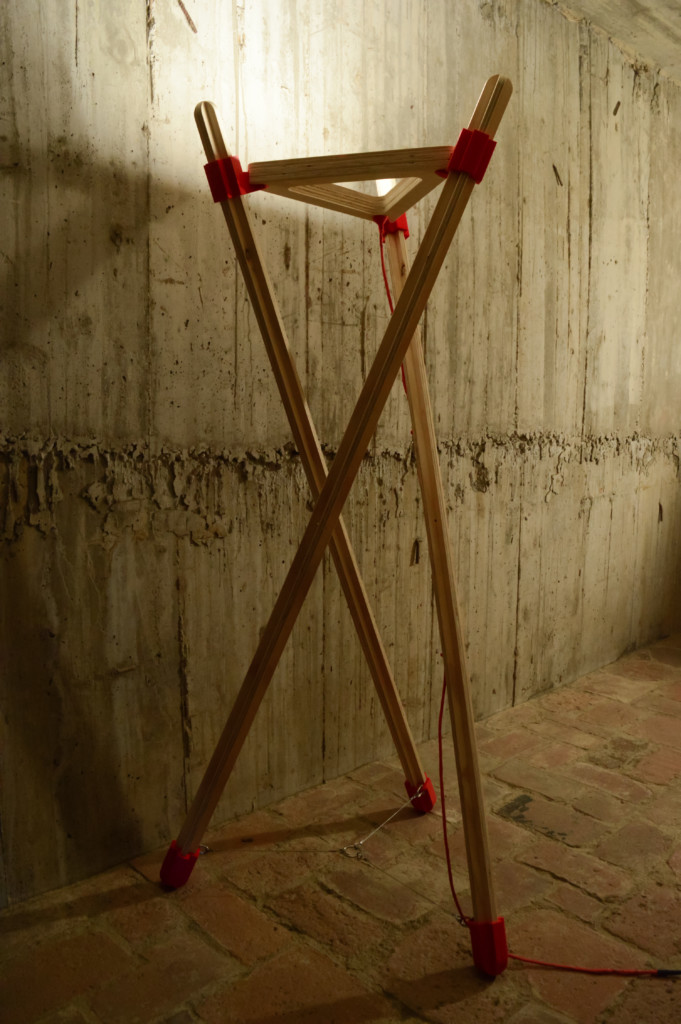
Project brief
Designing products to understand the interaction of fabrication tools and machines with various materials. The base material provided was a Plywood sheet of 2400mm x 1500mm x 15mm and PLA.
Design process
Tensegrity is a structural principle where compression members are arranged within a loop of tension members so as to generate a prestress and allowing the structure to eliminate external support and stand by itself.
The first step of designing a lamp was to understand the functioning of tensegrity in order to manipulate it for the ‘magic’ effect. Quick prototyping was an essential step to develop an optimized design. A tensegrity tripod module was generated in grasshopper in order to stimulate modifications.
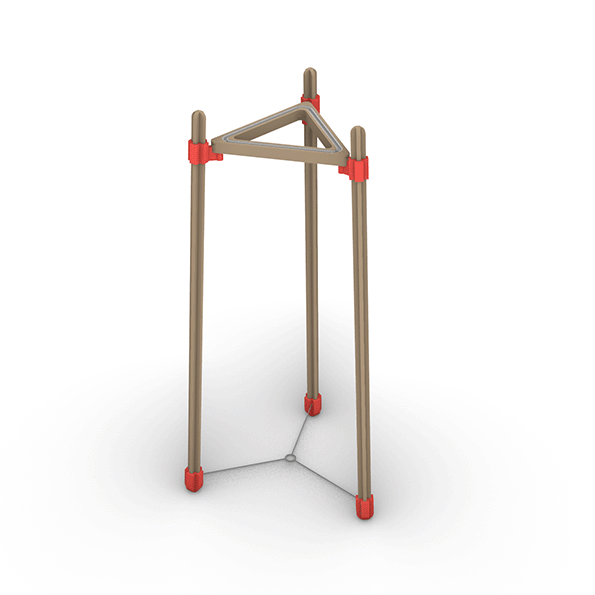
Design iterations for deriving the optimum angle of twist
Design decisions:
- Eliminating vertical tension members in the tripod
- Scaling up the base triangle for structural stability
- Twisting the top triangle and re-connecting the compression members
Rigorous research was undertaken in order to understand the electrical requirements of an ambient stand lamp.
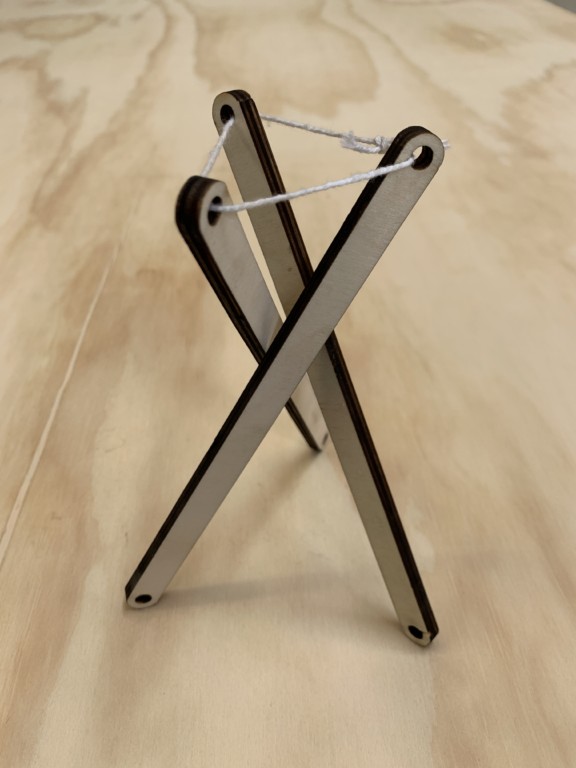
Prototype 1- experimenting with the shape in order to understand its behavior
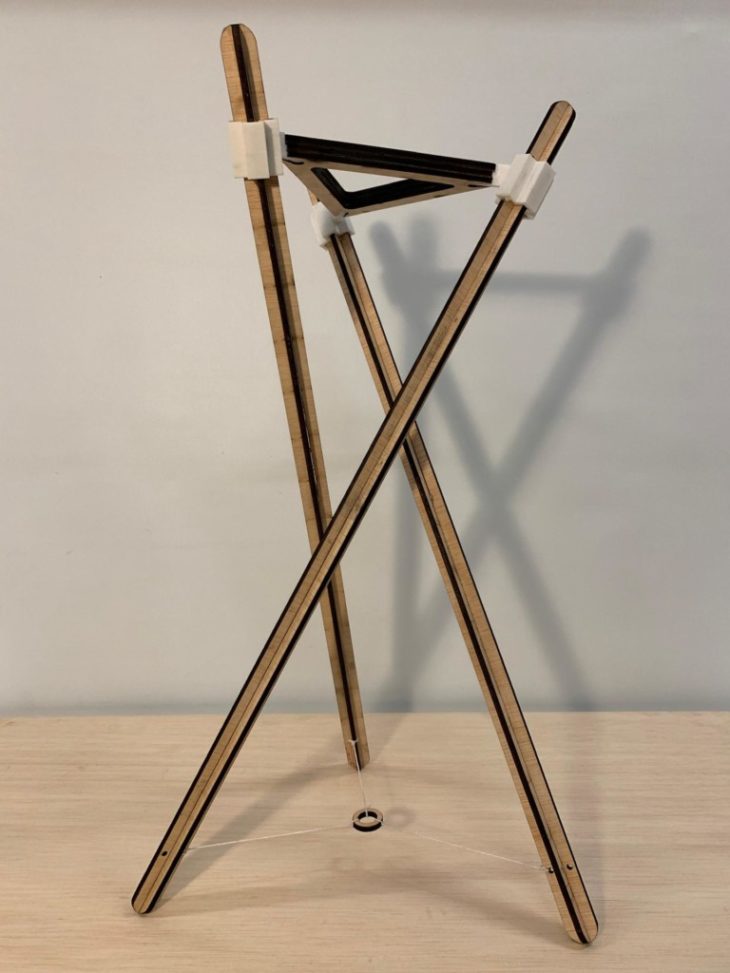
Prototype 2- design trials for tensile connections and 3D printed joineries
Materials used:
- 2400mm x 1500mm x 15mm Plywood sheets
- Recyclable red PLA
- 3mm tension cables
- 12V LED strip [3000k warmth]
- Electrical cable
- Wire sleeve
- 2mm transparent acrylic sheet
- Fitting parts
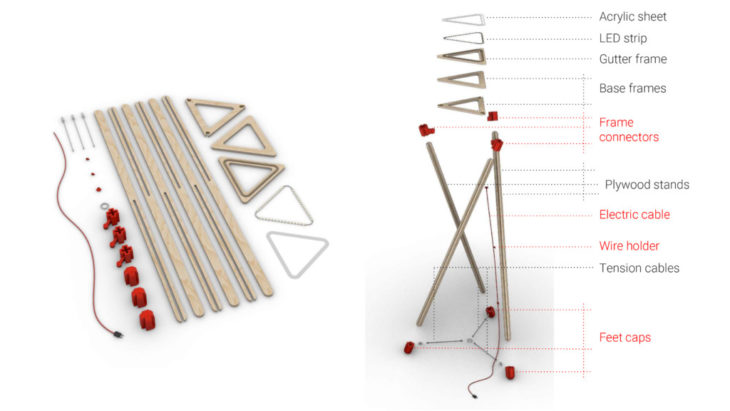
Exploded view- Materials and assembly
Fabrication process
Step 1– Preparing CNC files for plywood members
Step 2– 3D printing the connectors
Step 3– Electrical connections
Step 4– Connecting tension members
Step 5– Assembly
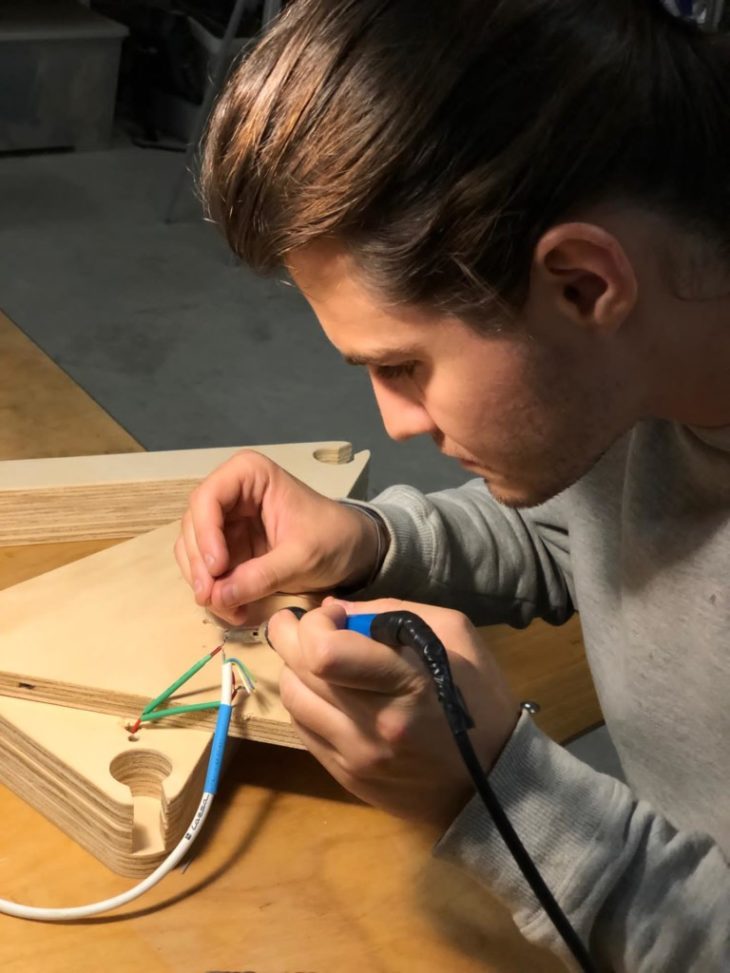
Soldering for LED wiring

CNC process
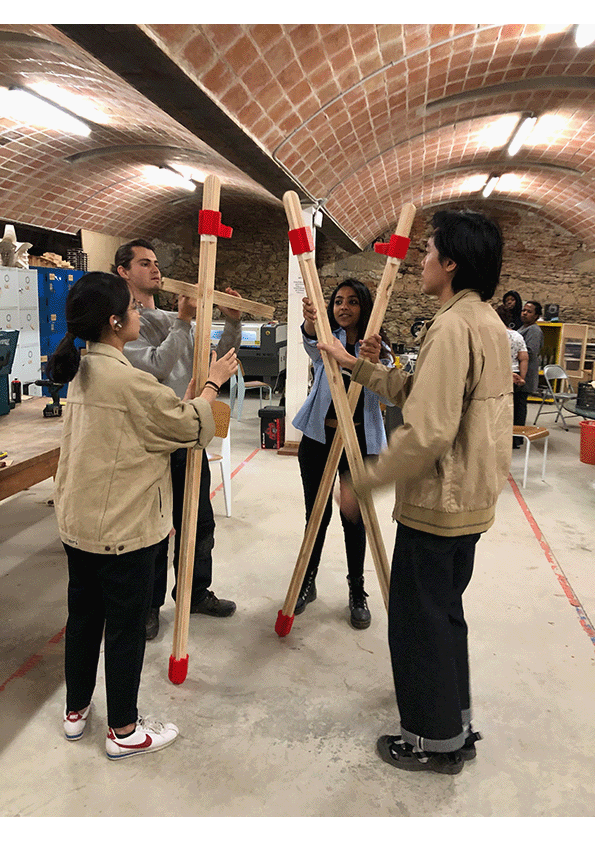
First assembly
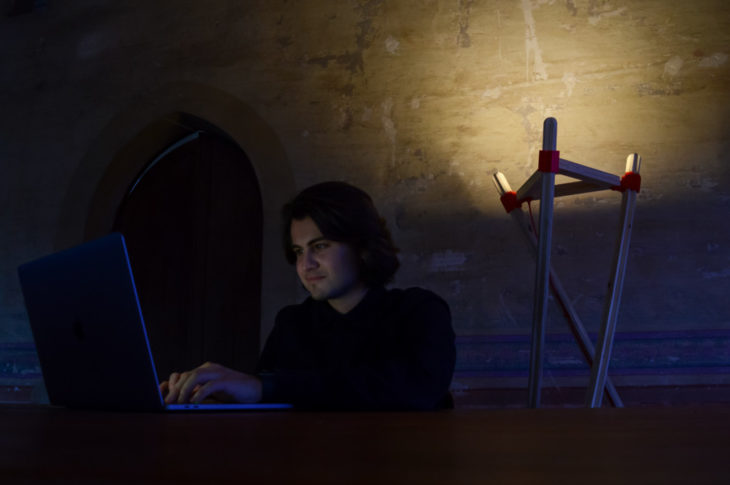
picture in context
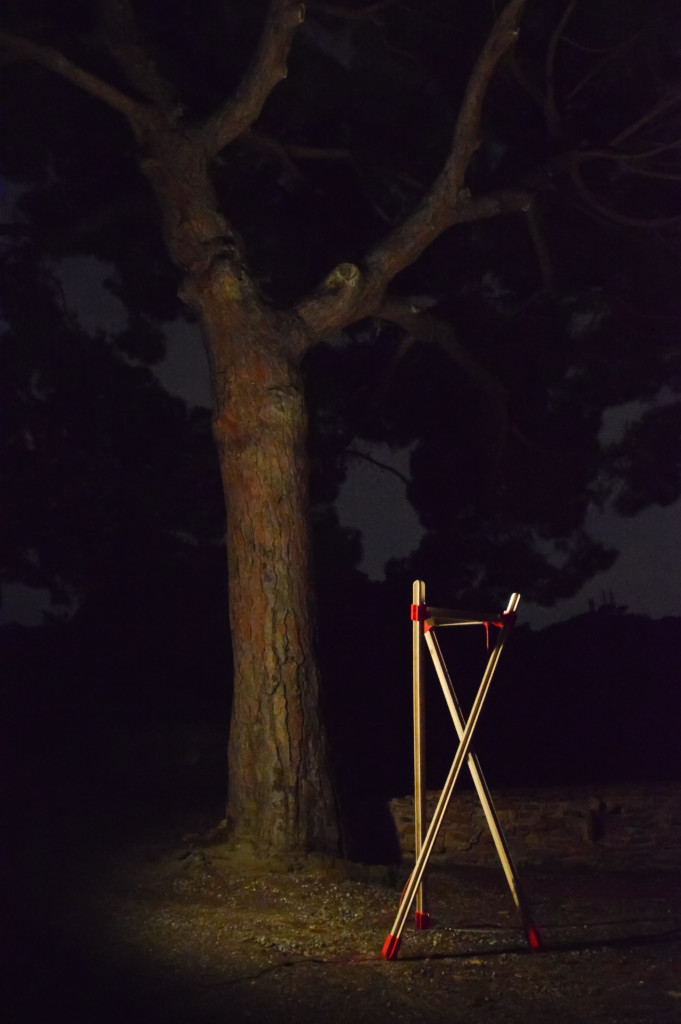
picture in context
Anti-gravity lamp is a project of IAAC, Institute for Advanced Architecture of Catalonia, developed at Masters in Advanced Ecological Buildings and Biocities in 2021-22 by:
Students: Romain Russe and Roshni Shah
Photographer: Jaume Cebolla Vicent
Faculty: Bruno Ganem Coutinho
